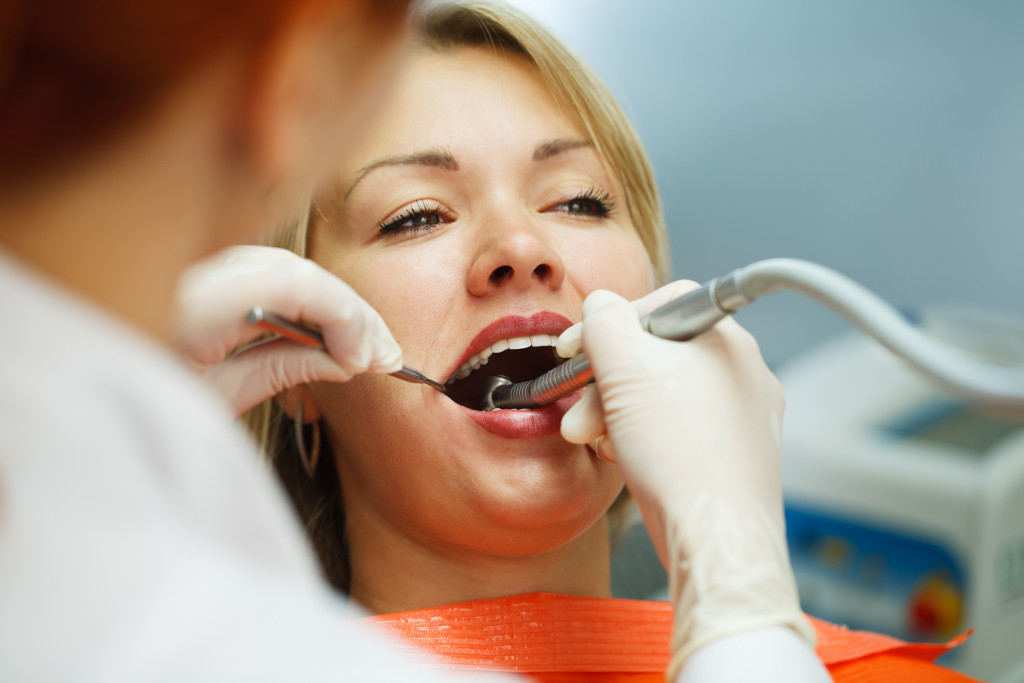Disclaimer: The Lifestyle Elf. This site provides fashion and lifestyle content for informational purposes only.
- Periodontal disease is a bacterial infection that can cause tooth loss, receding gums, and bone damage.
- Good oral hygiene and early treatment are essential to prevent and overcome periodontal disease.
- Diagnosis of periodontal disease involves inspecting the teeth and gums for signs of inflammation, swelling, or bleeding.
- Treatment options for periodontal disease may include non-surgical, surgical, or laser therapy, bone grafting, or tooth implants.
- Restoring oral health is linked to improved overall quality of life and can reduce the risk of other health issues, such as heart disease and stroke.
In pursuing overall health and wellness, people often overlook one of the most critical aspects of well-being—oral health. A healthy mouth is the key to healthy living. One of the most common oral health issues millions face worldwide is periodontal disease.
This bacterial infection affects the tissues and bones surrounding and supporting the teeth. The good news is that periodontal disease is treatable and can be prevented with proper oral hygiene.
Oral wellness goes beyond healthy teeth and gums. It affects the overall quality of life in ways you may not imagine. Oral health impacts your ability to speak, eat, and interact with others. Research has linked poor oral health to more severe health issues like heart disease, diabetes, and stroke.
Restoring oral wellness requires a holistic approach that includes preventive care, early diagnosis, and prompt treatment of any issue.
This blog explores the impact of periodontal disease on oral health, ways to prevent it, and how to restore oral wellness after a diagnosis.
Impact of Periodontal Disease on Oral Health
Periodontal disease, also known as gum disease, is a bacterial infection that affects the tissues and bones that support the teeth. It is a prevalent condition that, if left untreated, can cause tooth loss, receding gums, and bone damage.
Research also indicates that periodontal disease can increase the risk of heart disease, stroke, and other health problems. Common symptoms of periodontal disease include bad breath, inflammation, swelling, receding gums, and bleeding.

Overcoming Periodontal Disease
Overcoming periodontal disease requires a combination of preventive measures, early diagnosis, and prompt treatment.
Good oral hygiene to prevent plaque and tartar buildup on the teeth is essential. Seeking early treatment for any signs of gum disease is also critical in preventing further spread of the disease.
Diagnosis and Assessment
An assessment by a dental professional is necessary to diagnose the periodontal disease accurately. During an evaluation, a dentist or periodontist inspects the teeth and gums for swelling, redness, and bleeding.
They also measure the depth of the pockets between the teeth and gums, which indicates the extent of damage caused by periodontal disease. Based on the assessment, an appropriate treatment plan is recommended.
Treatment Options for Periodontal Disease
The treatment options for periodontal disease depend on the severity and stage of the disease. Mild cases of gum disease can often be treated with non-surgical alternatives. However, more severe cases of periodontal disease may require surgical intervention to restore oral health.
Flap Surgery
Flap surgery is a surgical procedure that involves lifting the gums to remove plaque and tartar from the roots of the teeth. It is commonly used to treat moderate to severe cases of gum disease.
During the procedure, the gums are lifted, and the roots of the teeth are cleaned and smoothed. The gums are then repositioned and secured in place with surgical sutures.
Tooth Implants
Tooth implants may be an effective treatment option for restoring oral health and function when teeth are lost due to periodontal disease. It is an artificial tooth root that is permanently implanted into the jawbone.
They are a stable foundation for a dental crown or bridge, replacing missing teeth. Tooth implants look and function like natural teeth and are a long-lasting solution for tooth loss.
Bone Grafting
In some cases, periodontal disease can cause damage to the bone supporting the teeth. When this occurs, bone grafting may be necessary to replace the lost bone tissue.
During a bone grafting procedure, bone tissue is taken from another part of the body or a donor and transplanted to the area where bone loss has occurred. This helps to regenerate new bone tissue and restore oral health.
Laser Therapy
Laser therapy is a non-surgical treatment option for periodontal disease that uses a specialized laser to remove plaque and tartar from the gums. The laser can selectively remove the infected tissue without harming the surrounding healthy tissue.

Periodontal disease can have severe consequences for your oral health if left untreated. However, you can overcome this condition with the appropriate treatment options and restore oral wellness.
Flap surgery, bone grafting, laser therapy, and dental implants are all effective options for treating gum disease and repairing the damage it has done to your teeth and gums.
In addition to seeking professional treatment, it’s crucial to maintain good oral hygiene habits at home, including regular brushing and flossing and visiting your dentist for regular checkups.

